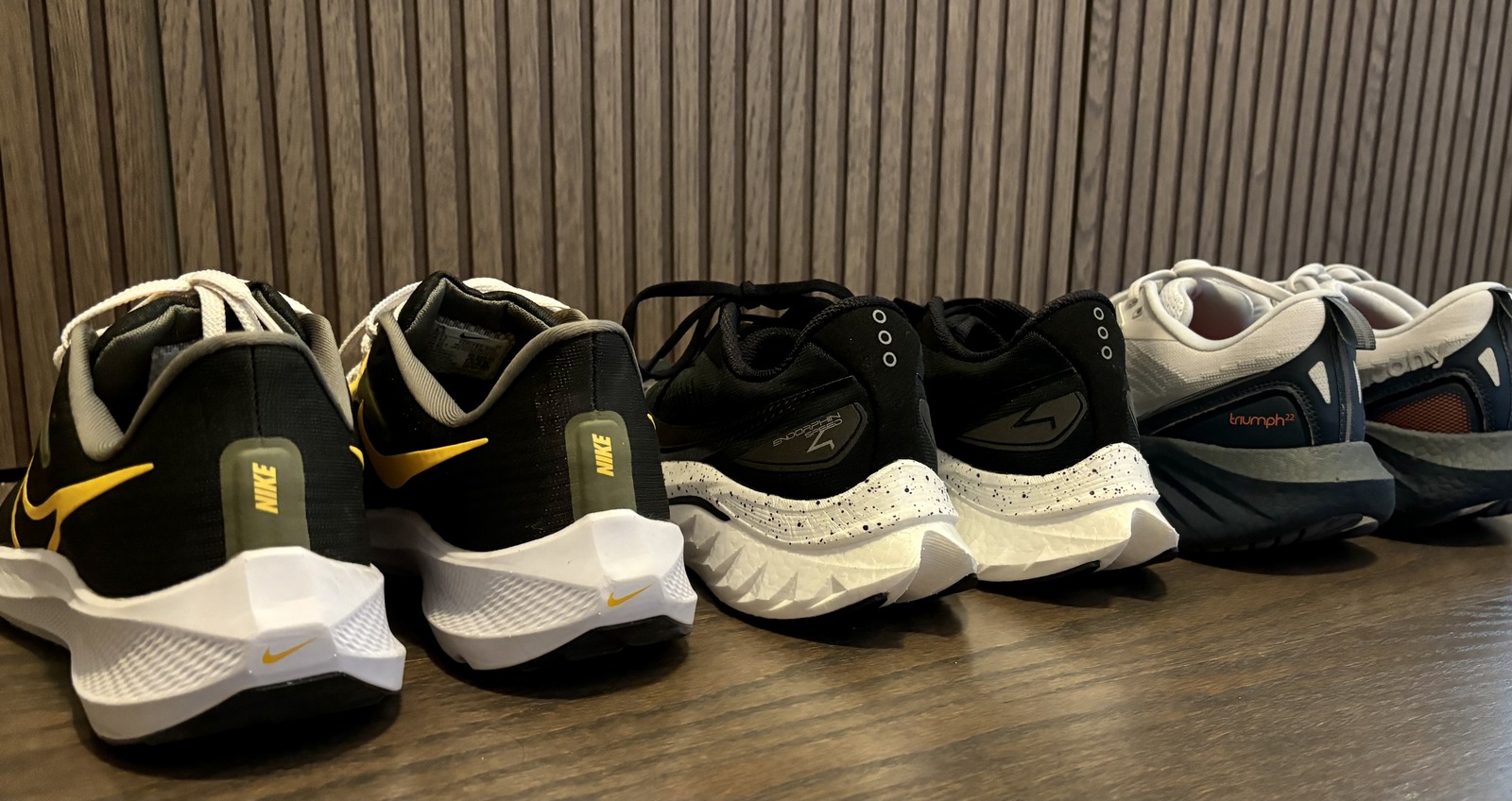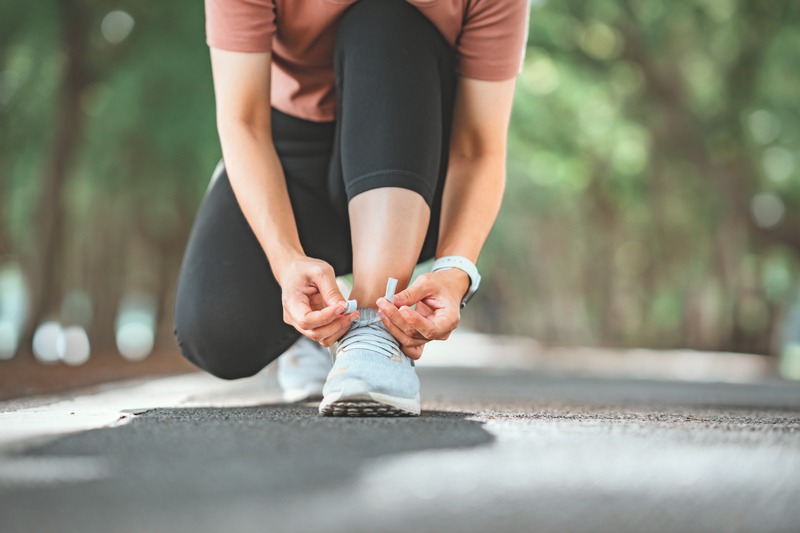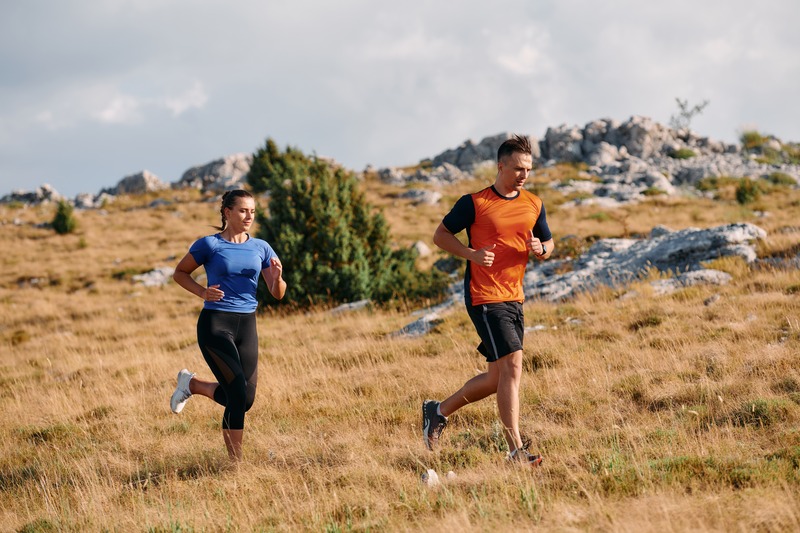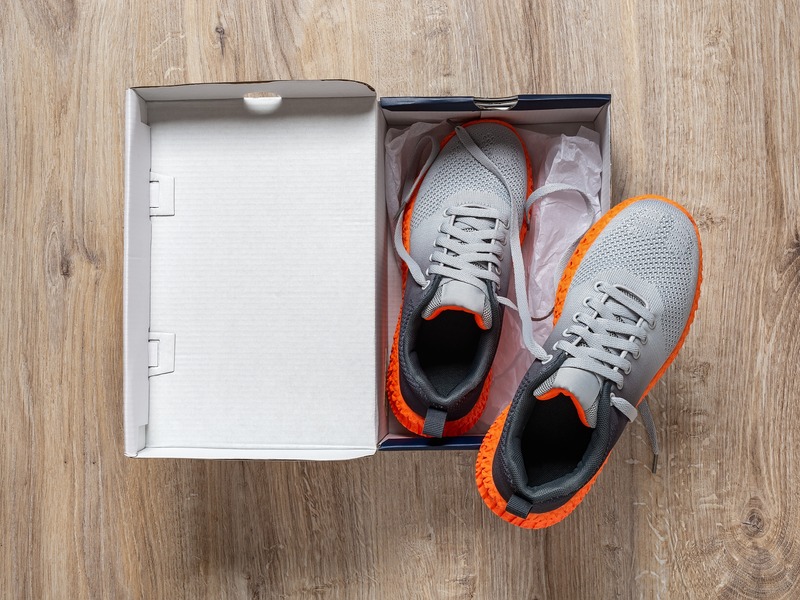Cushioning Explained: From Maximalist to Minimalist Running Shoes
June 27, 2024

When you buy through links on our site, we may earn an affiliate commission.
When you lace up your running shoes and hit the pavement, trail, or treadmill, have you ever wondered about the science behind that springy feeling underfoot? After all, the cushioning in your running shoes plays a crucial role in your comfort, performance, and injury prevention.
From plush maximalist models to barely-there minimalist options, the world of running shoe cushioning is vast and varied, and you might not appreciate just how impactful changing the type and level of cushioning in your running shoes can be for your enjoyment.
So, let's strip back the upper materials and focus on what's under your feet. From cutting-edge foam technologies to differences in stack heights, we'll cover everything you need to know, allowing you to make informed choices when buying your next pair of running shoes.
Understanding Cushioning Materials
The heart of your running shoe's cushioning lies in its midsole – the layer between the outsole (the part that touches the ground) and the upper (the part that wraps around your foot). This layer is made of various types of foam, depending on the brand and the specific shoe.
Each has pros and cons, and what you wear will largely be tied to the brand you choose since each manufacturer makes its own unique foam, even if it uses the same primary base material. Speaking of primary materials, below is a quick rundown of the most popular cushioning foams in running shoes today.
EVA (Ethylene-Vinyl Acetate)
EVA foam has been a staple in running shoe cushioning for decades, and for good reason. This synthetic material offers an excellent balance of cushioning, durability, and affordability.
Properties and characteristics:
- Lightweight and flexible
- Good shock absorption
- Relatively inexpensive to produce
Pros:
- Provides reliable cushioning for most runners
- Offers a responsive feel underfoot
- Available in various densities for different levels of support
Cons:
- Can break down faster than more innovative foams, losing its cushioning properties
- May not provide the energy return of newer materials
Popular shoes using EVA:
TPU (Thermoplastic Polyurethane)
TPU is more durable and consistent than traditional EVA. This material maintains its cushioning properties better over time and across a wider range of temperatures.
Properties and characteristics:
- More durable than EVA
- Maintains cushioning in hot and cold conditions
- Often used in combination with other materials
Pros:
- Longer-lasting cushioning
- Consistent performance across various weather conditions
- Can be engineered for specific performance characteristics
Cons:
- Typically heavier than EVA
- Often be more expensive
Popular shoes using TPU:
PEBA (Polyether Block Amide)
PEBA foam represents the cutting edge of running shoe cushioning technology. This material offers an exceptional combination of lightweight properties and energy return, making it a favorite for both elite athletes and everyday runners seeking top performance.
Properties and characteristics:
- Extremely lightweight
- Superior energy return
- Highly resilient and durable
Pros:
- Provides a soft yet responsive ride
- Maintains its properties over long distances
- Often used in high-performance and racing shoes
Cons:
- Can be less stable than firmer foams
- Typically the most expensive cushioning option
Popular shoes using PEBA:
Other Innovative Materials
The world of running shoe cushioning is constantly evolving. Every year, new technologies emerge that can potentially give runners the edge. Perhaps the most significant breakthrough in recent times has been ZoomX from Nike, which uses an advanced form of PEBA (Pebax) to deliver astonishing energy return in a lightweight foam.
You'll see this foam in Nike's flagship racing shoes, which, when combined with a midfoot carbon plate, make you feel like you are springing along.
Since then, a rash of other brands have followed suit and used their own spin on Pebax. New Balance's FuelCell, Reebok Floatride, On's Helion OF, and Saucony's PWRRUN PB are just a few of several leading brands using this new foam tech, which, according to recent studies, can deliver as much as 87% energy return.
Meanwhile, other brands, like Adidas, have focused on creating new hybrid blends of “old” foams like EVA and TPU, while Brooks has created a new air-injected EVA foam called DNA LOFT.
Stack Height and Its Impact on Cushioning
Now that you're familiar with the materials inside your running shoes, let's explore how the amount of cushioning affects your run. This is where stack height comes into play – a key measurement that can significantly influence your running experience.
Definition of Stack Height
Stack height refers to the total thickness of material between your foot and the ground. This measurement includes all layers of the shoe: the outsole, midsole, and any additional inserts or sock liners. Typically, stack height is measured at the shoe's heel and forefoot.
How Stack Height Affects Your Run
The stack height of your running shoes can impact various aspects of your running experience:
- Cushioning: As you might expect, a higher stack height generally means more cushioning material between your foot and the ground. This can provide enhanced shock absorption, which may be beneficial for long distances or if you're prone to injuries.
- Stability: While more cushioning can feel comfortable, it's important to note that a higher stack height can potentially reduce stability. The further your foot is from the ground, the more challenging it can be to maintain a natural foot strike. That said, highly cushioned stability shoes have features that keep your foot moving in the right direction.
- Running Mechanics: The amount of cushioning can influence your running gait. A higher stack height might promote a heel-striking pattern, while a lower one could encourage a midfoot or forefoot strike. Neither is inherently better – it's about finding what works best for your biomechanics.
Typical Stack Heights for Different Shoe Categories
To better understand what to expect, here's a general breakdown of stack heights across different types of running shoes. All of the millimeter measurements below refer to heel stack height.
- Minimalist/Barefoot: 0-10mm
- Low Profile: 10-20mm
- Moderate Cushioning: 20-35mm
- Maximum Cushioning: 35mm+
Remember, these are just guidelines. You'll find variations within each category, and some shoes blur the lines between these distinctions.
Maximalist vs. Minimalist Shoes
Now that you understand the basics of cushioning materials and stack height, let's explore the two ends of the cushioning spectrum: maximalist and minimalist running shoes.
Maximalist Running Shoes
Maximalist shoes represent the pinnacle of cushioning in the running world. They are characterized by their thick, plush midsoles, which provide maximum shock absorption and comfort.
Traditionally, these shoes were defined as having a heel stack height of 30mm or more. But with modern foam technologies, some shoes now sit at well over 40mm stack height. They don't necessarily have a large heel-to-toe drop either, and usually have significant cushioning throughout the shoe.
The advantages of these shoes are, first and foremost, the excellent shock absorption, which is great if you're regularly running long distances or prone to impact-related stress on joints. These shoes are great for recovery days after a hard workout, where you just need to log the miles at a comfortable pace.
The drawback is a complete lack of ground feel. It can feel as though you're running on a pillow. Weight is an issue, too, as these shoes run heavier than all other shoe types except maybe trail running shoes.
Popular examples of max cushioning shoes include Hoka Bondi, Saucony Triumph, and Asics Gel-Kayano.
Minimalist Shoes
On the other end of the spectrum, minimalist shoes aim to provide a more natural running experience with minimal interference between your foot and the ground. As well as usually featuring under 10mm stack heights, there's obviously very little by way of a heel-to-toe drop.
The upshot is that you have a shoe that is likely super-lightweight and flexible. This aids you if you're looking to transition into a more natural foot strike, and there's plenty of feedback from your chosen running surface. Over time, running in these shoes will also strengthen your lower leg muscles.
However, the lack of support makes them less than ideal for many use cases. You wouldn't want to attempt your weekend long run in one of these shoes. There's very little impact protection, meaning if you struggle with joint issues, these won't be for you. That said, those dedicated to the barefoot running movement will run mile after mile in these shoes.
In most cases, runners use these types of shoes for fast running, whereby they are up on the balls of their feet anyway and run with a more optimal foot strike. To that end, most racing flats are minimalistic in cushioning.
Aside from racing flats, the most well-known examples of minimalist running shoes include Vibram Five Fingers and Merrell Vapor Glove.
The Spectrum Between Maximalist and Minimalist
While maximalist and minimalist shoes represent the extremes, most running shoes fall somewhere in between. Many popular models offer a moderate amount of cushioning that balances comfort, protection, and ground feel.
These "middle ground" shoes can be an excellent choice for runners who want cushioning without the bulk of maximalist shoes or the minimal protection of barefoot-style options. Examples include the Brooks Ghost, Nike Pegasus, and Saucony Ride.
Choosing the Right Cushioning Level
With all this information about cushioning materials, stack heights, and shoe categories, you might be wondering: "How do I choose the right cushioning level for me?" The answer depends on several factors unique to you as a runner.
Factors to Consider
When selecting the ideal cushioning level for your running shoes, take into account the following:
- Body Weight: Heavy runners may benefit from more cushioning to absorb the increased impact forces, while lighter runners might prefer less cushioning for a more responsive feel.
- Weekly Mileage: As discussed, if you're logging high mileage, you might appreciate the extra cushioning of a maximalist shoe to reduce fatigue. For shorter runs or speed work, a shoe with less cushioning could provide better responsiveness and speed.
- Running Style: Are you a heel, midfoot, or forefoot striker? Your foot strike pattern can influence the type of cushioning that feels most comfortable and supportive, with natural heel strikers often benefiting from higher stack heights.
- Running Surface: The terrain you run on matters. Road runners might prefer more cushioning to combat hard surfaces, while trail runners might opt for less cushioning for better ground feel and stability.
- Personal Preference: Ultimately, comfort is key. Some runners love the plush feel of maximalist shoes, while others prefer a more minimalist approach. Trust your feet and choose what feels best for you.
Finding Your Perfect Cushioning is Key to Comfortable and Injury-Free Running
From maximalist shoes' plush comfort to minimalist options' excellent ground feel, running shoe cushioning is diverse and ever-evolving. However, now you understand the materials, technologies, and factors that influence cushioning, you're in an excellent position to find the right running shoes for your needs.
Remember, there are no hard and fast rules when it comes to running shoe cushioning. What works for one runner might not work for another. Don't be afraid to experiment with different levels of cushioning to find what feels best for you.
So, now that you're armed with this knowledge, why not explore some options? Use our search tool here at RunningShoeDeals.com to find great prices on a wide range of running shoes across the cushioning spectrum. Here's to finding the perfect balance for your runs!


